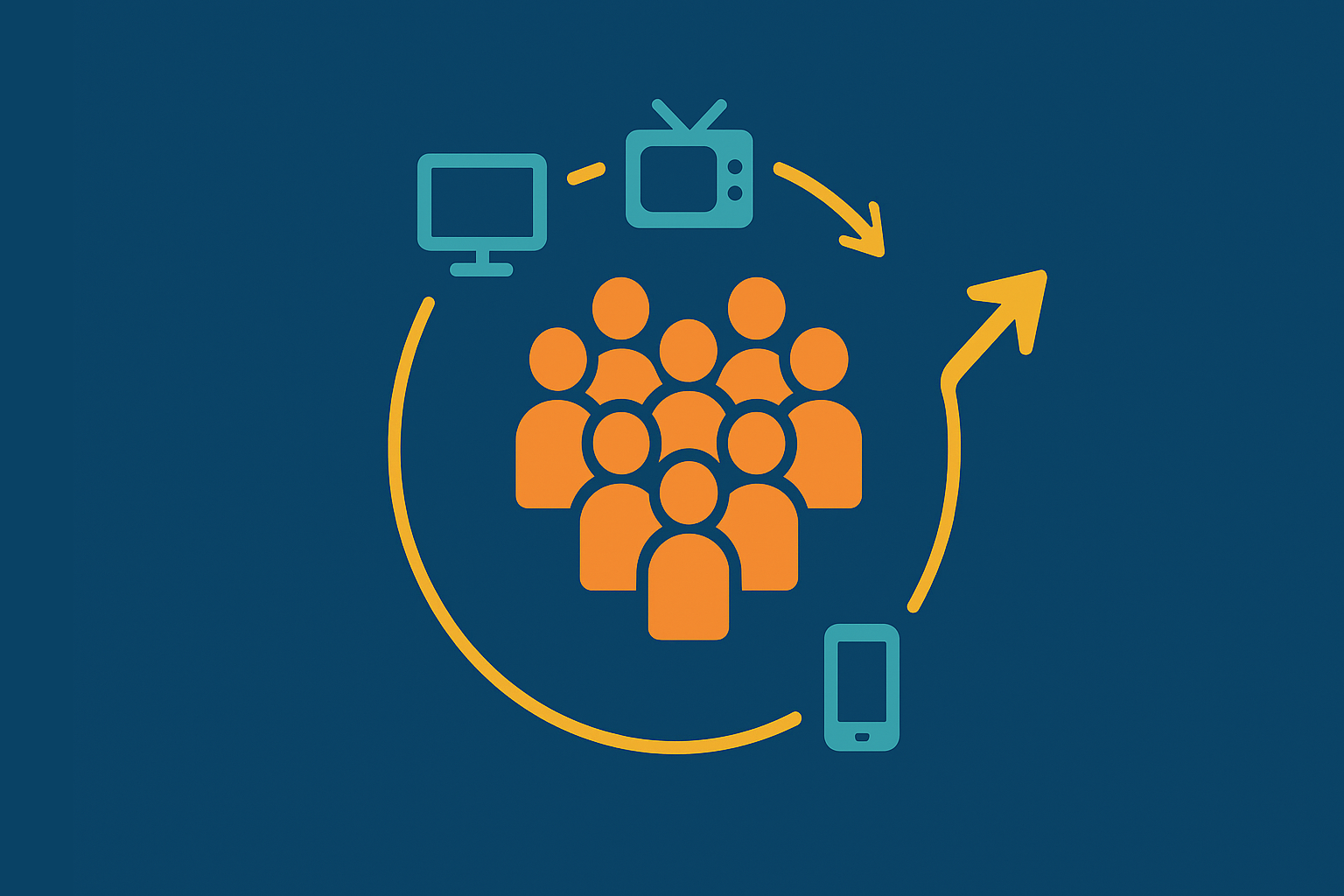Campaign performance can be deceptive.We treat metrics like proof — a high CTR, a low CPA, end of story.
But metrics don’t show growth — they show activity. A campaign can look strong while quietly serving the same users again and again.
A low CPA looks great until you realize you’re paying to reach people who already know your brand — maybe even those who’ve already converted.
That’s not growth. That’s comfort.
If performance looks strong but brand growth is flat, the numbers aren’t wrong — they’re incomplete.
You’re not scaling your audience — you’re circling it.
CPA Optimization: Built for Efficiency, Not Expansion
CPA campaigns chase easy wins. Platforms optimize for the cheapest conversions, which means they’ll always favor familiar faces — past visitors, recent engagers, or users who look just like them.
It’s efficient, but it’s not growth.
Retargeting has its place, but it only reinforces awareness you already have. Lookalikes stretch the circle, but only from what’s already known. They might find more moms aged 25–45 in the suburbs — and miss the single professionals or older couples who’d also buy. Those new customers don’t vanish; they just meet your competitors first.
Real growth means finding people who’ve never heard of you.
That requires profiling, creative testing, and measurement that goes beyond conversion data.
CPA-only tactics optimize for closure, not discovery.
And when you only optimize for closure, your funnel eventually closes too.
Why It Matters Now
The risks are bigger than ever.
Low-signal environments like CTV, Safari, and offline sales make it hard to know if you’re actually reaching new audiences.
CTV in particular is becoming a blind spot — a high-spend channel where performance looks fine, but reach overlap is rarely measured. Without visibility, advertisers can’t tell whether CTV is extending reach or simply re-exposing the same users who saw the display ad yesterday.
Meanwhile, privacy-first policies have pushed advertisers toward black-box optimizations that favor efficiency over exploration.
The result? Campaigns look strong on dashboards while their reach quietly shrinks.
Without audience measurement, the pool gets smaller.
Audience profiling reverses that trend. It reveals blind spots — showing you which groups your “smart” optimizations have ignored — across CTV, display, and every other channel where user-level data is compromised.
Audience Measurement: The Missing Half of Performance
Attribution shows what happened. Measurement shows who it happened to. That difference is everything.
Attribution might celebrate a campaign that just keeps retargeting loyal users. Measurement shows whether you’re unlocking new ones.
With audience measurement, you can see if your campaigns are expanding reach, building awareness, and opening new funnels — not just circling inside the same bubble.
This isn’t hypothetical; we’ve seen it in action. These two case studies to make the point.
Proof in Practice
Audience measurement doesn’t just explain results — it drives them.
Two campaigns show how.
1. An Over-the-Counter Health Brand
Shortlisted for both The Wires and The Drum Awards, this campaign launched a new digestive supplement into a market dominated by incumbents — without access to conversion data.
Audience measurement replaced attribution entirely.
By profiling who engaged the team identified a new seasonal audience, shifted spend mid-flight, and drove double-digit sales growth without a single pixel of conversion data.
Result:
- Full-year sales rose +41%
- Market share jumped by 33,8%
It proved that even in attribution-dark environments, audience insight can still guide strategy and deliver measurable outcomes.
2. Skylink: Finding New Subscribers
CANAL+ Group wanted to grow Skylink’s live-TV subscriber base. When performance plateaued, OMG looked beyond platform data and profiled site visitors.
They discovered high-tech households were underrepresented — and activated that segment.
Results:
- 36% lower CPA than campaign average
- 27% better than the next-best third-party audience
Measurement turned a static campaign into a scalable one.
The Pattern
Both campaigns show the same truth: Attribution rewards what’s already working. Measurement reveals what could work next.
The Takeaway
Efficiency isn’t growth. Real success means knowing who you’re reaching — and who you’re missing.
Ask tougher questions: Are we just retargeting the same users? Or are we reaching the right new ones — across display, CTV, and beyond?
That’s the difference between short-term wins and long-term growth.
Digiseg helps you do both.
Profile your best customers first, build precise audiences for targeting, and then measure who you actually reach once campaigns are live — all from the same household-based data.
